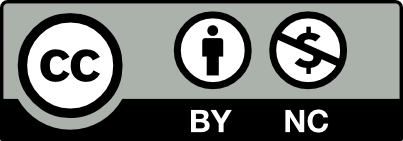Please use this identifier to cite or link to this item:
http://hdl.handle.net/10609/150376
| Title: | Fake news and youngsters’ decision journey: An evaluation of the influence of misinformation on social media |
| Author: | Kanashina, Olga Huertas-Garcia, Ruben Jiménez-Zarco, Ana Isabel |
| Citation: | Kanashina, O. [Olga], Garcia, R. H. [Rubén Huertas] & Jimenez-Zarco, A. I. [Ana Isabel]. (2023). Fake news and youngsters’ decision journey: An evaluation of the influence of misinformation on social media. Intangible Capital, 19(4), 534-554. doi: 10.3926/ic.2312. |
| Abstract: | Purpose: Social media has changed the way users interact with each other, and has become an important part of numerous lives. However, there is an increasing flow of implausible content circulating on social media, which points to the need for some categorization and regulation. This study will examine how the proliferation of fake news on social media impacts students and their choice of university. To answer this question, market research was conducted on the precedents that affect the acceptance of fake news among university students when choosing to study for a master's degree that will help them in their professional careers. Design/methodology/approach: The study used a quantitative method. A parsimonious model of causal relationships was proposed based on scales taken from the literature, assessed by a convenience sample of students, and adjusted by structural equation modelling (SEM). Findings: Results show that the parsimonious model explains 35% of fake news acceptance and that media dependency (ISMD) and parasocial interaction (PSI) are the main direct effects, while perceived media richness (PR) has a significant indirect influence on the attitude towards fake news and, consequently, on its acceptance. Furthermore, fake news literacy plays a correct moderating role with the most relevant source of influence, SNS dependency. Research limitations: A convenience sample was used, and a parsimonious model with three antecedent factors and one mediating factor was proposed. Other social factors could have been considered, including multicultural variables. Practical implications: The results point to students' expressed dependence on social networks as the main factor explaining their attitude towards fake news, negatively moderated by students' level of knowledge about the importance of this phenomenon in social networks. Therefore, it is relevant to promote knowledge about this phenomenon among students to reduce its influence on decision-making processes. Originality/value: This paper provides a novel context for the study of the proliferation of fake news on social networks: the process of choosing a university by students addicted to the news circulating on social media. |
| Keywords: | fake news universities social media SNS influence misinformation |
| DOI: | https://doi.org/10.3926/ic.2312 |
| Document type: | info:eu-repo/semantics/article |
| Version: | info:eu-repo/semantics/publishedVersion |
| Issue Date: | 2-Dec-2023 |
| Publication license: | https://creativecommons.org/licenses/by-nc/4.0/  |
| Appears in Collections: | Articles Articles cientÍfics |
Files in This Item:
| File | Description | Size | Format | |
|---|---|---|---|---|
| Fake_news_and_youngsters_decision_journey_An_evaluation_of_the_influence_of_misinformation_on_social_media.pdf | 397,79 kB | Adobe PDF |  View/Open |
Share:
 Google Scholar
Google Scholar
 Microsoft Academic
Microsoft Academic
Items in repository are protected by copyright, with all rights reserved, unless otherwise indicated.

